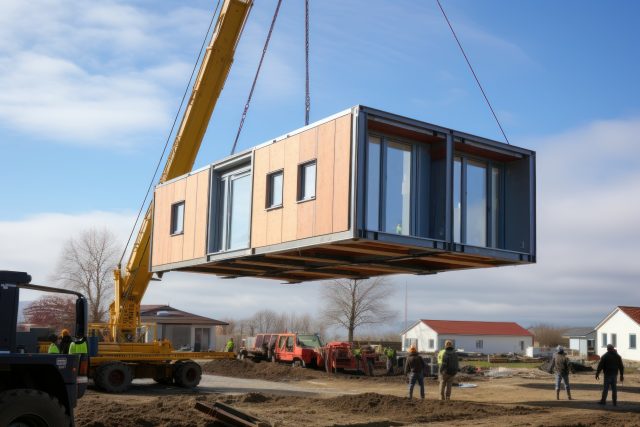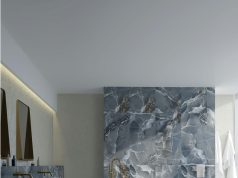
Modular homes are increasingly becoming a popular choice for many aspiring homeowners. These homes, constructed in sections at a factory and then assembled on-site, offer a unique approach to home building. They blend traditional home design with modern construction techniques.
This article will delve into modular home design, exploring the pros and cons of this contemporary housing solution. By the end of this discussion, you’ll understand what modular homes entail and be better equipped to decide if this modern approach aligns with your vision of the ideal living space.
Pros Of Modular Home Designs
Customization Opportunities
Modular homes stand out for their extensive customization options, allowing homeowners to express their unique style and meet specific living requirements. Furthermore, modular homes builders can assist you in selecting the layout to choose the interior and exterior finishes.
This flexibility enables the creation of a functional home and a true reflection of personal taste and lifestyle. Additionally, homeowners can incorporate modern amenities and smart home technologies, further enhancing the living experience.
Cost-Effectiveness
One of the primary benefits of modular homes is their cost-effectiveness. These homes benefit from economies of scale and reduced labor costs because they are constructed in a factory environment. The controlled setting minimizes waste and improves efficiency, lowering overall construction costs.
This affordability extends beyond the initial build, as modular homes often have lower maintenance costs than traditional homes. The financial savings make modular homes an attractive option for a wide range of budgets.
Fast Construction Time
The speed of assembly is a significant advantage of modular homes. Unlike traditional construction, which can be subject to weather-related delays and other unforeseen setbacks, modular homes are built in a controlled factory setting.
This environment ensures that construction progresses smoothly and rapidly, often allowing homeowners to move in much sooner than they would with a traditionally built home. The expedited construction process saves time and reduces the overall cost of building a house.
Quality Control
Modular homes benefit from a high level of quality control during construction. Built in a factory setting under stringent standards, skilled professionals closely inspect each module. This controlled environment ensures consistency in the building process, leading to a superior construction standard.
As a result, modular homes are known for their durability and long-term structural integrity. This attention to detail gives homeowners peace of mind, knowing their investment is sound and reliable.
Environmental Impact
The environmental impact of modular homes is considerably lower than traditional construction. The factory-based construction process allows for more efficient use of materials and reduces waste.
Many modular homes are designed sustainably, incorporating energy-efficient features such as improved insulation, energy-saving appliances, and renewable energy sources like solar panels. This helps reduce he home’s carbon footprint and leads to lower energy costs for the homeowner.
Cons Of Modular Home Designs
Design Limitations
While modular homes offer a degree of customization, they also have inherent design limitations. The need to transport modules to the construction site imposes restrictions on size and shape. Oversized modules or complex designs that can’t be easily transported may not be feasible.
Additionally, the modular construction process may limit the ability to make significant structural changes once the design is finalized. This can be a drawback for those seeking highly unique or unconventional home designs.
Additional Expenses
Although the base cost of modular homes can be more affordable, additional expenses can accumulate. These include the cost of purchasing land, laying a foundation, and setting up utilities.
The transportation of the modules from the factory to the site can also add a significant expense, especially for homes far from the manufacturing facility. These extra costs must be factored into the overall budget, as they can sometimes offset the initial savings on construction.
Coordination Challenges
Building a modular home requires meticulous coordination between various parties, including manufacturers, transporters, and local contractors. Ensuring that the modules are manufactured to specification, delivered on time, and adequately assembled on-site demands high organization and communication. Delays or miscommunications at any stage can lead to setbacks, extending the overall home completion timeline.
Transport Risks
Transporting modules from the factory to the construction site carries the risk of damage. Despite careful handling and protective measures, modules can be exposed to stresses during transit that may lead to structural issues or cosmetic damage. Once on-site, these issues require prompt and sometimes costly repairs or adjustments, potentially impacting on the finished home’s construction schedule and overall quality.
Limited Green Customization
Homeowners interested in eco-friendly living might find their options somewhat limited with modular homes. While many modular constructions are designed with energy efficiency in mind, the range of specific green materials or advanced sustainable features might be more restricted than traditional construction. This can be a significant consideration for those prioritizing environmental sustainability in their home design.
Conclusion
Modular homes go beyond being a mere alternative; they embody a contemporary, efficient, and environmentally conscious approach to housing, fundamentally reshaping people’s perception of construction and living environments. Therefore, whether you’re a first-time homebuyer or a seasoned real estate enthusiast, weighing the advantages and disadvantages will empower you to embark on an exhilarating journey toward confidently embracing the world of modular home designs.













